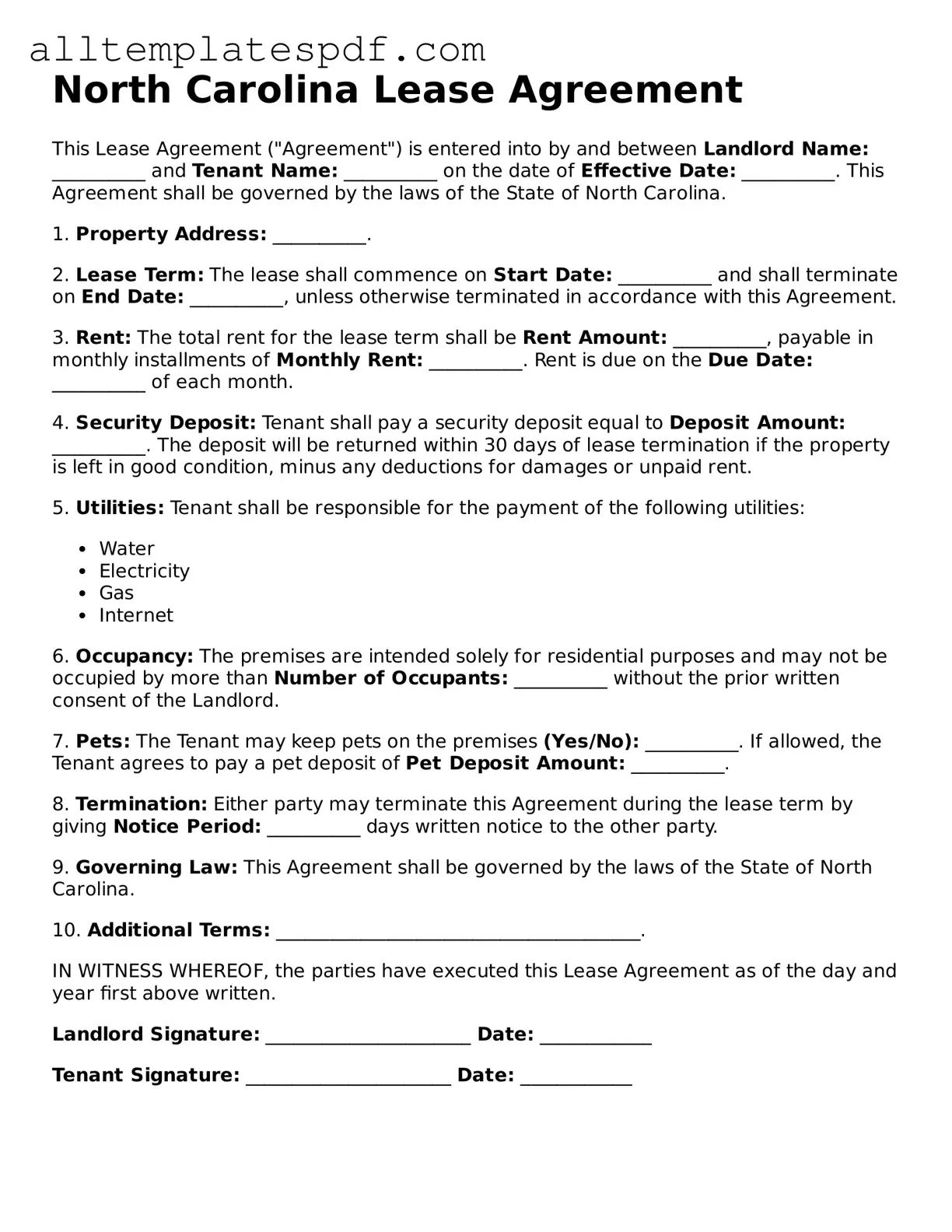Blank Lease Agreement Template for the State of North Carolina
The North Carolina Lease Agreement form is a legal document that outlines the terms and conditions between a landlord and tenant for renting a residential property. This form serves to protect the rights of both parties and ensures clarity regarding rental payments, maintenance responsibilities, and other essential obligations. Understanding its components is crucial for a smooth leasing experience.
Ready to secure your rental agreement? Fill out the form by clicking the button below.
Open Editor
